Table of contents
Fennel ( Foeniculum vulgare), especially its bulb, is used both raw and cooked (preferably in organic quality) in cooking. Fennel is also used in the manufacture of certain medicines due to its ingredients.
Use in the kitchen
There are three varieties of fennel that differ slightly in the composition of their ingredients and in their uses: sweet fennel (also known as spice fennel; Foeniculum vulgare var. dulce), bitter fennel (also known as wild fennel; Foenicum vulgare var. vulgare) and vegetable fennel (also known as bulb fennel or tube fennel; Foeniculum vulgare var. azoricum). Sweet fennel and bitter fennel are used primarily as medicines and teas (e.g. for digestive problems), while vegetable fennel is mainly used in the kitchen. 1,2
The green-whitish, sweet-tasting bulb of the vegetable fennel tastes like anise. Its shape ranges from flat to spherical and, depending on the variety, it can weigh between 250 and 400 g per piece. What do you eat with fennel? Basically, everything from the fennel is edible. You can eat the bulb and the stems as well as the fennel greens. The fennel seeds can also be used - more on this in the corresponding article.
Can you eat fennel raw? Fennel bulbs taste excellent raw. How do you eat fennel raw? They go well in all kinds of salads (especially delicious with fruit such as oranges, pears, apples) but also simply on their own or in dips. You can also make healthy smoothies with the raw bulb.
Fennel can also be used boiled, steamed, grilled, baked or gratinated. It is wonderful in stews, casseroles, soups and pasta sauces, but also in risotto, in a potato pan or as a side dish with carrots. Fennel stuffed with green spelt, lemony shirataki noodles with fennel and peppers and braised fennel on couscous with hummus are recommended vegan vegetable dishes. Fennel is omnipresent in Mediterranean cuisine; it is often combined with other Mediterranean vegetables such as olives, sweet peppers and tomatoes.
Since fennel itself has an intense aroma, it should be seasoned sparingly. Salt,pepper, nutmeg and lemon juice go well with the bulb, as does a little curry and chili. The aromatic fennel also goes particularly well with nuts (eg walnuts) and seeds (eg pine nuts).
How do you prepare a fennel bulb? First, you should rinse the raw fennel thoroughly. Then you cut off the root and shorten the stems. If the bulb is slightly damaged or dried out, you can remove the outer layer of skin or cut out any brown bruises. After that, it depends on the dish you want to prepare. You can halve the bulb, cut it into sticks or cubes, slice it or grate it. The cut fennel greens taste like dill and can be finely chopped for seasoning or as a garnish.
Vegan recipe for a fennel and asparagus raw vegetable salad
Ingredients (for 4 people): 2 fennel (raw, organic), 700 g asparagus (green and white), 1 lemon, 3 sprigs of peppermint, 1 clove of garlic, 5-6 tbsp rapeseed oil, 50 g pine nuts, a little salt andpepper.
Preparation: Rinse the fennel bulb and slice finely. Peel the green asparagus in the lower half and cut the ends fresh. Peel the white asparagus from the head and also cut the ends fresh. Cut about 3 cm off the tips of all asparagus and halve lengthways. Cut the asparagus stalks diagonally into slices about 5 mm wide. Put the fennel and asparagus in a bowl. Finely grate the lemon peel and squeeze the lemon. Rinse the peppermint, shake dry and cut into fine strips, peel and squeeze the garlic clove. Mix the oil, lemon juice, lemon peel, garlic and peppermint and add to the raw and vegan fennel and asparagus salad. Mix everything together well, season with salt and pepper and serve with pine nuts. Leave to stand for about 10 minutes and then serve.
Vegan recipes with fennel can be found under the note: " Recipes that have the most of this ingredient ".
| Not only vegans or vegetarians should read this: Vegans often eat unhealthily. Avoidable nutritional errors. |
Purchasing - Storage
Fennel bulbs (raw) can be bought all year round in most DA-CH supermarket chains (such as Coop, Migros, Denner, Volg, Spar, Aldi, Lidl, Rewe, Edeka, Hofer, Billa etc.). Organic supermarkets (e.g. Denn's Biomarkt and Alnatura) mostly offer organic fennel all year round. When is fennel in season? Very fresh specimens can be found at weekly markets during the season, which in DA-CH countries runs from May to November. Fresh fennel can be recognized by a plump, white to light green bulb that has no discoloration or bruises, and fresh-looking fennel greens.
The availability of fennel varies depending on the size of the store, catchment area, etc. If you are interested, click on our recorded food prices for the DA-CH countries (above under the ingredient image). There you will find current prices from various supermarkets and their price development.
Wild Fennel can be found
in the wild, or rather in the wild, in Italy, especially in Tuscany, and on dry, sunny slopes on the Iberian Peninsula. In Switzerland, wild fennel can be found in vineyards, on walls and roadsides, and in southern Germany, occasionally in former monastery gardens. 3,4
Storage tips
The fresher you use fennel, the better - the taste is the finest, the nutrient content the highest. But you can store it in the vegetable compartment of the refrigerator for up to two weeks, ideally wrapped in a damp cloth. Fennel, raw or blanched, can also be frozen well and will keep for up to six months.
Ingredients - Nutritional values - Calories
Raw fennel is very low in calories and fat, with 31 kcal and 0.2 g fat per 100 g. Carbohydrates are also present in small amounts, at 7.3 g/100g. Proteins are present at 1.2 g/100g. 5 The three most important fennel nutrients follow.
Does fennel contain vitamin K? Fennel (raw) is rich in vitamin K with 63 µg/100g; that makes up 84% of the daily requirement. Pak choi (63 µg/100g) and savoy cabbage (69 µg/100g) contain a similar amount. With 830 µg/100g, chard contains significantly more vitamin K. 5
100 g of raw fennel contains 414 mg of potassium (21% of the daily requirement). Brussels sprouts (389 mg/100g) and lamb's lettuce (459 mg/100g) have a similar content. Fennel seeds, of which only small amounts are used, contain almost four times as much potassium at 1,694 mg/100g. 5
The vitamin C (ascorbic acid) content in fennel (raw) is 12 mg/100g (15% of the daily requirement). This is similar to that of mountain eggplant (12 mg/100g) and artichokes (12 mg/100g). Significantly more vitamin C can be found in yellow bell peppers (184 mg/100g). 5
The complete ingredients of fennel (raw), the coverage of the daily requirement and comparison values with other ingredients can be found in our nutrient tables. In the article Nutrients explained you will get a detailed insight into the topic.
Health benefits
Is the fennel bulb healthy? Fennel offers a variety of health benefits. Scientific studies have shown that extracts from fennel have a number of pharmacological effects. The effects range from anti-inflammatory, antioxidant, antimicrobial, antiviral and antimutagenic, to antipyretic, antispasmodic, diuretic and expectorant, to memory-enhancing. The health benefits are due to the presence of phytochemicals such as flavonoids, phenolic compounds, fatty acids and amino acids. 10,14
An important bioactive compound (and fragrance) in fennel is anethole. Studies indicate that anethole has anti-inflammatory, anti-cancer, chemopreventive, neuroprotective, spasmolytic, antihypertensive, antithrombotic, immunomodulatory and antidiabetic effects and may be useful for the treatment of some chronic diseases such as inflammatory diseases of the skin and lungs, cancer, type 2 diabetes and neurological diseases. Long-term clinical studies are needed to validate its efficacy and usefulness. 11
Fennel is also said to be able to prevent diabetic complications. 9
Several studies have investigated the therapeutic effects of fennel in the treatment of menopausal symptoms such as hot flashes, stress, sleep disorders and vaginal atrophy. Although the results were positive, evidence of clinical efficacy is still limited. 7
A 2020 study also showed that fennel (along with cinnamon and ginger) can have a pain-relieving effect on primary dysmenorrhea (severe period pain). However, these results should also be confirmed by further studies with larger sample sizes. 8
Dangers - Intolerances - Side effects
F. vulgare is considered safe, as many studies show with no reports of serious side effects. 10
Cross-reactions with fennel are possible in cases of allergy to mugwort pollen. 12
Use as a recognized medicinal plant
Bitter fennel, sweet fennel and fennel oil are classified by the HMPC as traditional herbal medicinal products. According to ESCOP and Commission E, bitter fennel, sweet fennel or bitter fennel oil can be used for dyspeptic complaints such as mild, cramp-like gastrointestinal complaints, flatulence and catarrh of the upper respiratory tract, and to relieve menstrual cramps. 13
Folk medicine - natural medicine
Fennel is considered a home remedy for colds and coughs. It is also considered a natural galactagogue (milk production stimulant) for nursing mothers. 14
Ecological footprint - animal welfare
According to a German study from 2020, the average ecological CO 2 footprint of fennel is 0.2 kg CO 2 eq/kg. This is therefore relatively small. In comparison: beef produces an average of 13.6 kg CO 2 eq/kg. 15 In addition: those who buy local fennel during the season support fennel with the smallest ecological footprint.
In 2011, the Oldenburg Food Institute of the LAVES examined 19 vegetable fennel samples from Europe (16 from conventional and 3 from organic cultivation) for pesticide residues. Of the 19 samples, ten were residue-free - including the three organic samples. However, no exceedances of the maximum level were found. 16
Fennel plants in the open field are heavily dependent (up to 86%) on pollination by insects. These influence the development of the bulbs, their weight, but also the development of anethole, which is used to produce essential oils. 18 Other plants (such as cucumbers, avocados or almond trees) are also dependent on insect pollination, although these have experienced a sharp decline in recent decades. In order to keep harmful effects on the insect world as low as possible, products from organic production should be used, as this type of cultivation does not use synthetic fertilizers or pesticides, which can also harm insects. 19
Worldwide occurrence - cultivation
Fennel originally comes from the Mediterranean region. In ancient times it spread to the Middle East and Europe. 3
The most important producing countries today are India, Pakistan, Italy, France, Germany, Russia and the USA. 14
Cultivation - Harvest
Temperate and subtropical regions are best suited for growing fennel. The bulbs thrive best in sunny locations with nutrient-rich, well-drained, moist soil with a pH of 5.5 to 6.5. 14
Fennel can be easily grown in your own garden, raised bed or in a large pot. It is important to ensure that the plant is in a sheltered, warm and sunny location with deep, nutrient-rich soil that retains water well. Sowing can take place from mid-April to August, while the harvest period begins in late summer and lasts until October. 6
Further information
Fennel ( Foeniculum vulgare) belongs to the Umbelliferae family. It is the only known representative of the genus Foeniculum. The plant is related to anise, dill and caraway, among others. The botanical genus name Foeniculum comes from the Latin word foenum, which means hay, and describes the appearance of the dried leaves, the fennel greens. 3
There are three varieties of fennel: sweet fennel (also known as spice fennel; Foeniculum vulgare var. dulce), bitter fennel (also known as wild fennel; Foenicum vulgare var. vulgare) and vegetable fennel (also known as bulb fennel or bulb fennel; Foeniculum vulgare var. azoricum). 1,2
Alternative names
Fennel is colloquially called fenicel, lady's fennel, bread seed or long caraway.
In English, fennel is called fennel and the fennel bulb is called fennel bulb.
Other uses
In addition to the use of fennel in cooking and as a medicine, it is also often used in the production of spirits such as absinthe or pastis due to its anise-like aroma. 17
Bibliography - 19 Sources
| 1. | Pflanzen-lexikon.com Fenchel (Foeniculum vulgare). |
| 2. | Plantura.garden Fenchel-Sorten: Neue, alte und resistente Sorten für den Garten. |
| 3. | Kraeuter-buch.de Fenchel. |
| 4. | Infoflora.ch Foeniculum vulgare Mill. |
| 5. | USDA United States Department of Agriculture. |
| 6. | Plantura.garden Fenchel anpflanzen: Aussaat, Pflanzzeit & Mischkultur. |
| 7. | Lee HW, Ang L, Kim E, Lee MS. Fennel (Foeniculum vulgare Miller) for the management of menopausal women’s health: A systematic review and meta-analysis. Complement Ther Clin Pract. 2021;43:101360. |
| 8. | Xu Y, Yang Q, Wang X. Efficacy of herbal medicine (Cinnamon/fennel/ginger) for primary dysmenorrhea: a systematic review and meta-analysis of randomized controlled trials. J Int Med Res. 2020;48(6):300060520936179. |
| 9. | Bower A, Marquez S, de Mejia EG. The health benefits of selected culinary herbs and spices found in the traditional mediterranean diet. Crit Rev Food Sci Nutr. 2016;56(16):2728–46. |
| 10. | Badgujar SB, Patel VV, Bandivdekar AH. Foeniculum vulgare Mill: a review of its botany, phytochemistry, pharmacology, contemporary application, and toxicology. Biomed Res Int. 2014;2014:842674. |
| 11. | Aprotosoaie AC, Costache II, Miron A. Anethole and its role in chronic diseases. Adv Exp Med Biol. 2016;929:247–67. |
| 12. | Aha.ch Kreuzreaktionen. |
| 13. | Arzneipflanzenlexikon.info Fenchel. |
| 14. | Javed R, Hanif MA, Ayub MA, Rehman R. Fennel. Medicinal Plants of South Asia. 2020;241–56. |
| 15. | Reinhardt G, Gärtner S, Wagner T. Ökologische Fussabdrücke von Lebensmitteln und Gerichten in Deutschland. Institut für Energie- und Umweltforschung Heidelberg ifeu. 2020;1-22. |
| 16. | Laves.niedersachsen.de Pflanzenschutzmittelrückstände in Gemüsefenchel. |
| 17. | Bauernzeitung.ch Fenchel ist einzigartig und vielseitig. |
| 18. | Schurr L, Masotti V, Geslin B, et al. To what extent is fennel production dependent on insect pollination? Agriculture, Ecosystems & Environment. 2022; Vol 338. |
| 19. | Brittain CA, Vighi M, Bommarco R, et al. Impacts of a pesticide on pollinator species richness at different spatial scales. Basic and Applied Ecology. 2010; Vol 11. |

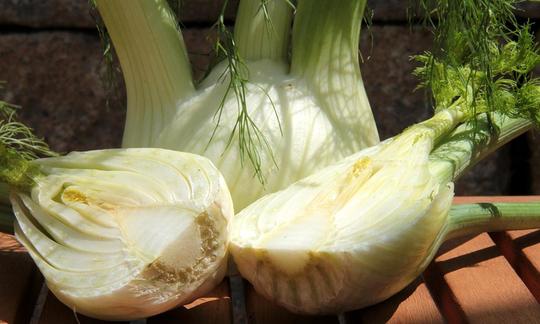

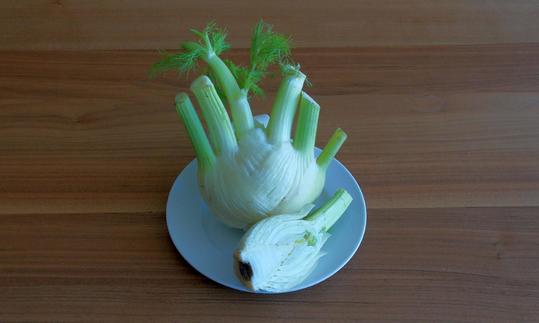

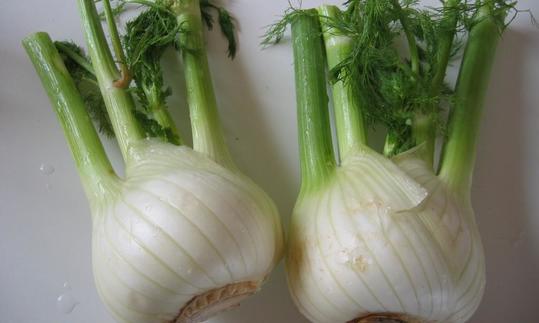

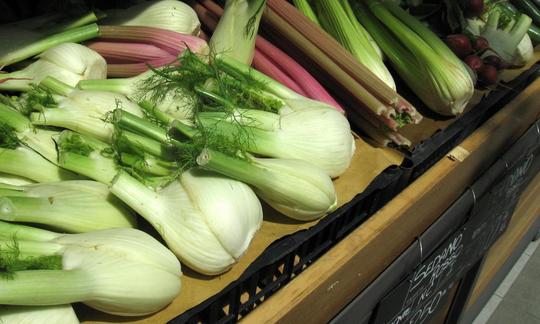

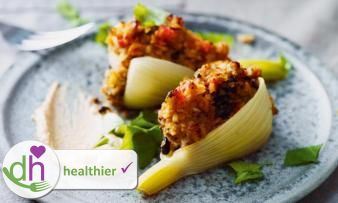
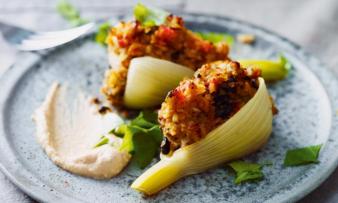
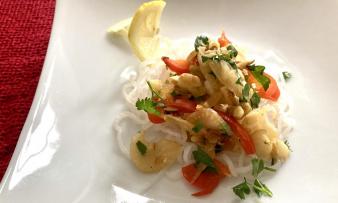





Comments